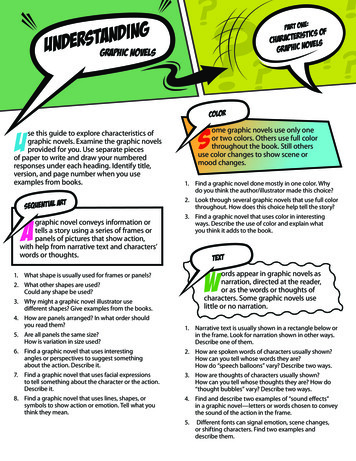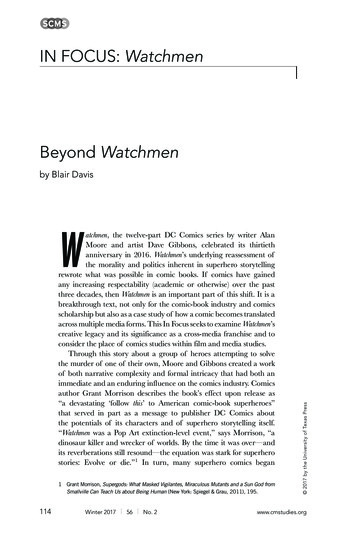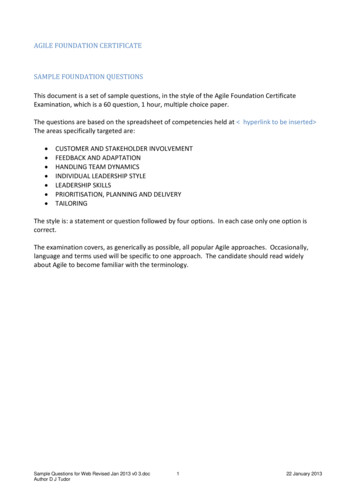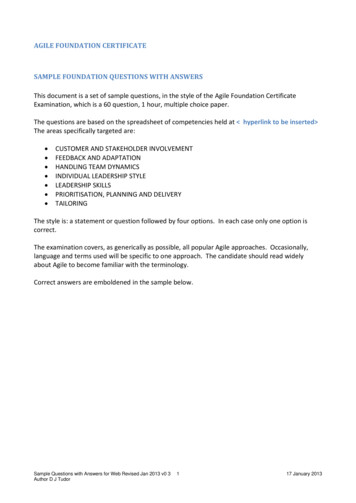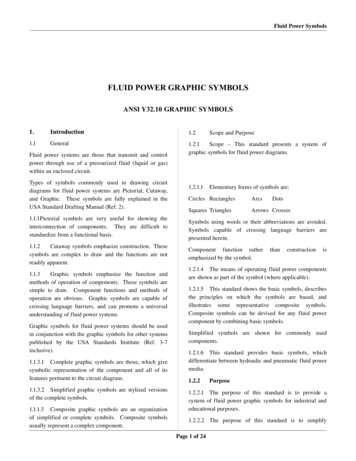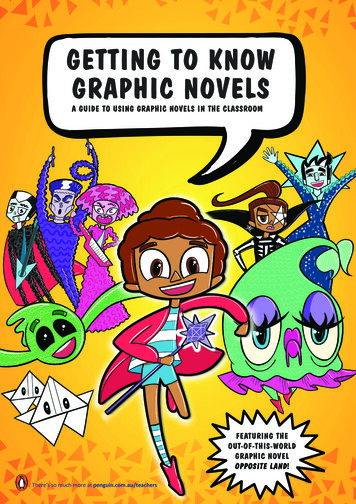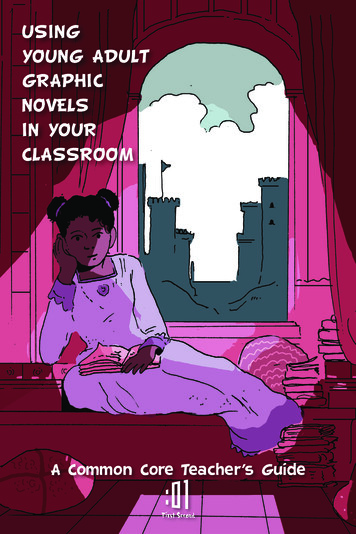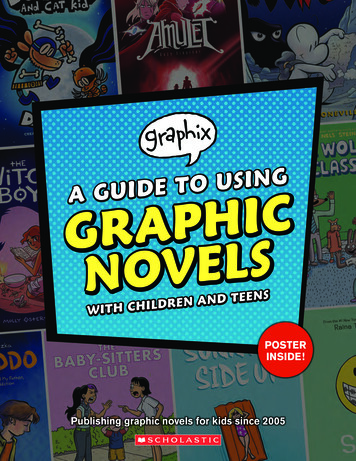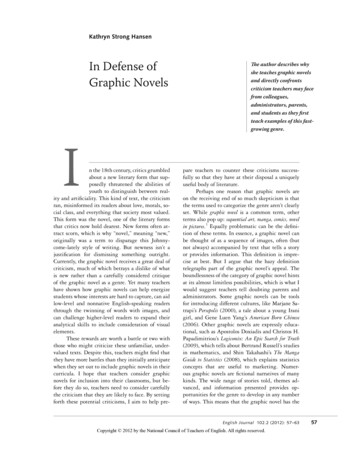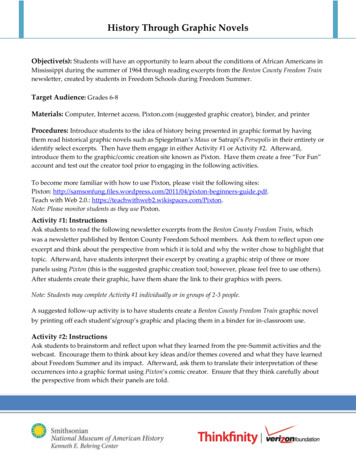
Transcription
Continue
Watchmen graphic novel downloadWant more? Advanced embedding details, examples, and help! This article is about the comic book limited series. For the 2009 film adaptation, see Watchmen (film). For the 2019 television series continuation, see Watchmen (TV series). For other uses, see Watchman. Comics by Alan Moore and Dave GibbonsWatchmenCover of Watchmen #1 (Sept. 1986)Art by Dave GibbonsDate1986–1987PublisherDC ComicsCreative teamWriterAlan MooreArtistDave GibbonsColoristJohn HigginsEditors Len Wein Barbara Kesel Original publicationPublished inWatchmenIssues12Date of publicationSeptember 1986 – October 1987Watchmen is an American comic book maxiseries by the British creative team of writer Alan Moore, artist Dave Gibbons and colorist John Higgins. It was published by DC Comics in 1986 and 1987, and collected in a single volume edition in 1987. Watchmen originated from a story proposal Moore submitted to DCfeaturing superhero characters that the company had acquired from Charlton Comics. As Moore's proposed story would have left many of the characters unusable for future stories, managing editor Dick Giordano convinced Moore to create original characters instead. Moore used the story as a means to reflectcontemporary anxieties and to deconstruct and satirize the superhero concept. Watchmen depicts an alternate history in which superheroes emerged in the 1940s and 1960s and their presence changed history so that the United States won the Vietnam War and the Watergate scandal was never exposed. In 1985, thecountry is edging toward World War III with the Soviet Union, freelance costumed vigilantes have been outlawed and most former superheroes are in retirement or working for the government. The story focuses on the personal development and moral struggles of the protagonists as an investigation into the murder of agovernment-sponsored superhero pulls them out of retirement. Creatively, the focus of Watchmen is on its structure. Gibbons used a nine-panel grid layout throughout the series and added recurring symbols such as a blood-stained smiley face. All but the last issue feature supplemental fictional documents that add tothe series' backstory, and the narrative is intertwined with that of another story, an in-story pirate comic titled Tales of the Black Freighter, which one of the characters reads. Structured at times as a nonlinear narrative, the story skips through space, time and plot. In the same manner, entire scenes and dialogue haveparallels with others through synchronicity, coincidence and repeated imagery. A commercial success, Watchmen has received critical acclaim both in the comics and mainstream press. Watchmen was recognized in Time's List of the 100 Best Novels as one of the best English language novels published since 1923. In aretrospective review, the BBC's Nicholas Barber described it as "the moment comic books grew up".[1] After a number of attempts to adapt the series into a feature film, director Zack Snyder's Watchmen was released in 2009. A video game series, Watchmen: The End Is Nigh, was released in the same year to coincidewith the film's release. DC Comics published Before Watchmen, a series of nine prequel miniseries, in 2012, and Doomsday Clock, a 12-issue limited series and sequel to the original Watchmen series, from 2017 to 2019 – both without Moore's or Gibbons' involvement. The second series integrated the Watchmencharacters within the DC Universe, home to more recognizable DC superheroes like Superman and Batman. A television continuation to the original comic, set 34 years after the comic's timeline, was broadcast on HBO from October to December 2019 with Gibbons' involvement. A comic continuation of the HBO series,titled Rorschach and written by Tom King, began publication in October 2020. Moore has expressed his displeasure with later adaptations and asked that Watchmen not be adapted for future works.[2] Publication history Watchmen, created by writer Alan Moore and artist Dave Gibbons, first appeared in the 1985 issue ofDC Spotlight, the 50th anniversary special. It was eventually published as a 12-issue maxiseries from DC Comics, cover-dated September 1986 to October 1987.[3] It was subsequently collected in 1987 as a DC Comics trade paperback that has had at least 24 printings as of March 2017;[4] another trade paperback waspublished by Warner Books, a DC sister company, in 1987.[5] In February 1988, DC published a limited-edition, slipcased hardcover volume, produced by Graphitti Design, that contained 48 pages of bonus material, including the original proposal and concept art.[6][7] In 2005, DC released Absolute Watchmen, anoversized slipcased hardcover edition of the series in DC's Absolute Edition format. Assembled under the supervision of Dave Gibbons, Absolute Watchmen included the Graphitti materials, as well as restored and recolored art by John Higgins.[8] That December DC published a new printing of Watchmen issue #1 at theoriginal 1986 cover price of 1.50 as part of its "Millennium Edition" line.[9] In 2012, DC published Before Watchmen, a series of nine prequel miniseries, with various creative teams producing the characters' early adventures set before the events of the original series.[10] In the 2016 one-shot DC Universe: RebirthSpecial, numerous symbols and visual references to Watchmen, such as the blood-splattered smiley face, and the dialogue between Doctor Manhattan and Ozymandias in the last issue of Watchmen, are shown.[11] Further Watchmen imagery was added in the DC Universe: Rebirth Special #1 second printing, whichfeatured an update to Gary Frank's cover, better revealing the outstretched hand of Doctor Manhattan in the top right corner.[12][13] Doctor Manhattan later appeared in the 2017 four-part DC miniseries The Button serving as a direct sequel to both DC Universe Rebirth and the 2011 storyline "Flashpoint". Manhattanreappears in the 2017–19 twelve-part sequel series Doomsday Clock.[14] Background and creation "I suppose I was just thinking, 'That'd be a good way to start a comic book: have a famous super-hero found dead.' As the mystery unraveled, we would be led deeper and deeper into the real heart of this super-hero'sworld, and show a reality that was very different to the general public image of the super-hero." —Alan Moore on the basis for Watchmen[15] In 1983, DC Comics acquired a line of characters from Charlton Comics.[16] During that period, writer Alan Moore contemplated writing a story that featured an unused line ofsuperheroes that he could revamp, as he had done in his Miracleman series in the early 1980s. Moore reasoned that MLJ Comics' Mighty Crusaders might be available for such a project, so he devised a murder mystery plot which would begin with the discovery of the body of the Shield in a harbor. The writer felt it didnot matter which set of characters he ultimately used, as long as readers recognized them "so it would have the shock and surprise value when you saw what the reality of these characters was".[15] Moore used this premise and crafted a proposal featuring the Charlton characters titled Who Killed the Peacemaker,[17]and submitted the unsolicited proposal to DC managing editor Dick Giordano.[18] Giordano was receptive to the proposal, but opposed the idea of using the Charlton characters for the story. Moore said, "DC realized their expensive characters would end up either dead or dysfunctional." Instead, Giordano persuadedMoore to continue with new characters.[19] Moore had initially believed that original characters would not provide emotional resonance for the readers, but later changed his mind. He said, "Eventually, I realized that if I wrote the substitute characters well enough, so that they seemed familiar in certain ways, certainaspects of them brought back a kind of generic super-hero resonance or familiarity to the reader, then it might work."[15] Alan Moore, writer of WatchmenDave Gibbons, artist of Watchmen Artist Dave Gibbons, who had collaborated with Moore on previous projects, recalled he "must have heard on the grapevine that hewas doing a treatment for a new miniseries. I rang Alan up, saying I’d like to be involved with what he was doing", and Moore sent him the story outline.[20] Gibbons told Giordano he wanted to draw the series Moore proposed and Moore approved.[21] Gibbons brought colorist John Higgins onto the project because heliked his "unusual" style; Higgins lived near the artist, which allowed the two to "discuss [the art] and have some kind of human contact rather than just sending it across the ocean".[17] Len Wein joined the project as its editor, while Giordano stayed on to oversee it. Both Wein and Giordano stood back and "got out oftheir way"; Giordano remarked later, "Who copy-edits Alan Moore, for God's sake?"[18] After receiving the go-ahead to work on the project, Moore and Gibbons spent a day at the latter's house creating characters, crafting details for the story's milieu and discussing influences. The pair was particularly influenced by aMad parody of Superman named "Superduperman"; Moore said, "We wanted to take Superduperman 180 degrees—dramatic, instead of comedic".[19] Moore and Gibbons conceived of a story that would take "familiar old-fashioned superheroes into a completely new realm";[22] Moore said his intention was to create "asuperhero Moby Dick; something that had that sort of weight, that sort of density".[23] Moore came up with the character names and descriptions, but left the specifics of how they looked to Gibbons. Gibbons did not sit down and design the characters deliberately, but rather "did it at odd times [.] spend[ing] maybe twoor three weeks just doing sketches."[17] Gibbons designed his characters to make them easy to draw; Rorschach was his favorite to draw because "you just have to draw a hat. If you can draw a hat, then you've drawn Rorschach, you just draw kind of a shape for his face and put some black blobs on it and you're done."[24] Moore began writing the series very early on, hoping to avoid publication delays such as those faced by the DC limited series Camelot 3000.[25] When writing the script for the first issue, Moore said he realized, "I only had enough plot for six issues. We were contracted for 12!" His solution was to alternate issues thatdealt with the overall plot of the series with origin issues for the characters.[26] Moore wrote very detailed scripts for Gibbons to work from. Gibbons recalled that "[t]he script for the first issue of Watchmen was, I think, 101 pages of typescript—single-spaced—with no gaps between the individual panel descriptions or,indeed, even between the pages." Upon receiving the scripts, the artist had to number each page "in case I drop them on the floor, because it would take me two days to put them back in the right order", and used a highlighter pen to single out lettering and shot descriptions; he remarked, "It takes quite a bit of organizingbefore you can actually put pen to paper."[27] Despite Moore's detailed scripts, his panel descriptions would often end with the note "If that doesn't work for you, do what works best"; Gibbons nevertheless worked to Moore's instructions.[28] In fact, Gibbons only suggested a single change to the script: a compression ofOzymandias' narration while he was preventing a sneak attack by Rorschach, as he felt that the dialogue was too long to fit with the amount of action expressed; Moore agreed and re-wrote the scene.[29] Gibbons had a great deal of autonomy in developing the visual look of Watchmen, and frequently insertedbackground details that Moore admitted he did not notice until later.[23] Moore occasionally contacted fellow comics writer Neil Gaiman for answers to research questions and for quotes to include in issues.[26] Despite his intentions, Moore admitted in November 1986 that there were likely to be delays, stating that hewas, with issue five on the stands, still writing issue nine.[27] Gibbons mentioned that a major factor in the delays was the "piecemeal way" in which he received Moore's scripts. Gibbons said the team's pace slowed around the fourth issue; from that point onward the two undertook their work "just several pages at a time.I'll get three pages of script from Alan and draw it and then toward the end, call him up and say, 'Feed me!' And he'll send another two or three pages or maybe one page or sometimes six pages."[30] As the creators began to hit deadlines, Moore would hire a taxi driver to drive 50 miles and deliver scripts to Gibbons. Onlater issues the artist even had his wife and son draw panel grids on pages to help save time.[26] Near the end of the project, Moore realized that the story bore some similarity to "The Architects of Fear", an episode of The Outer Limits television series.[26] The writer and Wein argued over changing the ending, and whenMoore refused to give in, Wein quit the book. Wein explained, "I kept telling him, 'Be more original, Alan, you've got the capability, do something different, not something that's already been done!' And he didn't seem to care enough to do that."[31] Moore acknowledged the Outer Limits episode by referencing it in theseries' last issue.[28] Synopsis Setting Watchmen is set in an alternate reality that closely mirrors the contemporary world of the 1980s. The primary difference is the presence of superheroes. The point of divergence occurs in the year 1938. Their existence in this version of the United States is shown to have dramaticallyaffected and altered the outcomes of real-world events such as the Vietnam War and the presidency of Richard Nixon.[32] In keeping with the realism of the series, although the costumed crimefighters of Watchmen are commonly called "superheroes", only one, named Doctor Manhattan, possesses any superhumanabilities.[33] The war in Vietnam ends with an American victory in 1971 and Nixon is still president as of October 1985 upon the repeal of term li
Watchmen graphic novel download Want more? Advanced embedding details, examples, and help! This article is about the comic book limited series. For the 2009 film adaptation, see Watchmen (film). For the 2019 television series continuation, see Watchmen (TV series). For other uses, see Watchman. Comics by Alan Moore and Dave Gibbons WatchmenCover of Watchmen #1 (Sept. 1986)Art by Dave .
